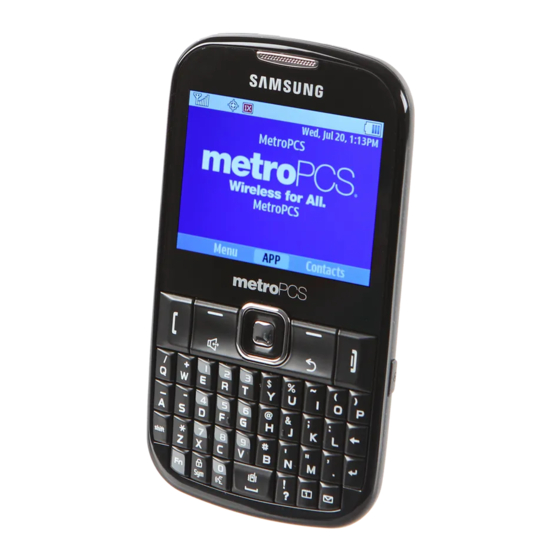Samsung A3LSCHR380 Manual del usuario - Página 13
Navegue en línea o descargue pdf Manual del usuario para Teléfono móvil Samsung A3LSCHR380. Samsung A3LSCHR380 35 páginas.

are used against the head or against the body. Either configuration should
result in compliance with the safety limit.
D o w ir e le ss ph on e a cce ssor ie s t h a t cla im t o sh ie ld t h e h e a d fr om
RF r a dia t ion w or k ?
Since there are no known risks from exposure to RF emissions from
wireless phones, there is no reason to believe that accessories that claim
to shield the head from those emissions reduce risks. Some products that
claim to shield the user from RF absorption use special phone cases, while
others involve nothing more than a metallic accessory attached to the
phone. Studies have shown that these products generally do not work as
advertised. Unlike "hand-free" kits, these so-called "shields" may interfere
with proper operation of the phone. The phone may be forced to boost its
power to compensate, leading to an increase in RF absorption. In
February 2002, the Federal trade Commission (FTC) charged two
companies that sold devices that claimed to protect wireless phone users
from radiation with making false and unsubstantiated claims. According to
FTC, these defendants lacked a reasonable basis to substantiate their
claim.
W h a t a bou t w ir e le ss ph on e in t e r fe r e n ce w it h m e dica l e qu ipm e n t ?
Radio frequency energy (RF) from wireless phones can interact with some
electronic devices. For this reason, FDA helped develop a detailed test
method to measure electromagnetic interference (EMI) of implanted
cardiac pacemakers and defibrillators from wireless telephones. This test
method is now part of a standard sponsored by the Association for the
Advancement of Medical instrumentation (AAMI). The final draft, a joint
effort by FDA, medical device manufacturers, and many other groups,
was completed in late 2000. This standard will allow manufacturers to
ensure that cardiac pacemakers and defibrillators are safe from wireless
phone EMI. FDA has tested wireless phones and helped develop a
voluntary standard sponsored by the Institute of Electrical and Electronic
Engineers (IEEE). This standard specifies test methods and performance
requirements for hearing aids and wireless phones so that no interference
occurs when a person uses a compatible phone and a compatible hearing
aid at the same time. This standard was approved by the IEEE in 2000.
FDA continues to monitor the use of wireless phones for possible
interactions with other medical devices. Should harmful interference be
found to occur, FDA will conduct testing to assess the interference and
work to resolve the problem.
Additional information on the safety of RF exposures from various sources
can be obtained from the following organizations:
FCC RF Safety Program:
http://www.fcc.gov/oet/rfsafety/
Environmental Protection Agency (EPA):
http://www.epa.gov/radiation/
Occupational Safety and Health Administration's (OSHA):
